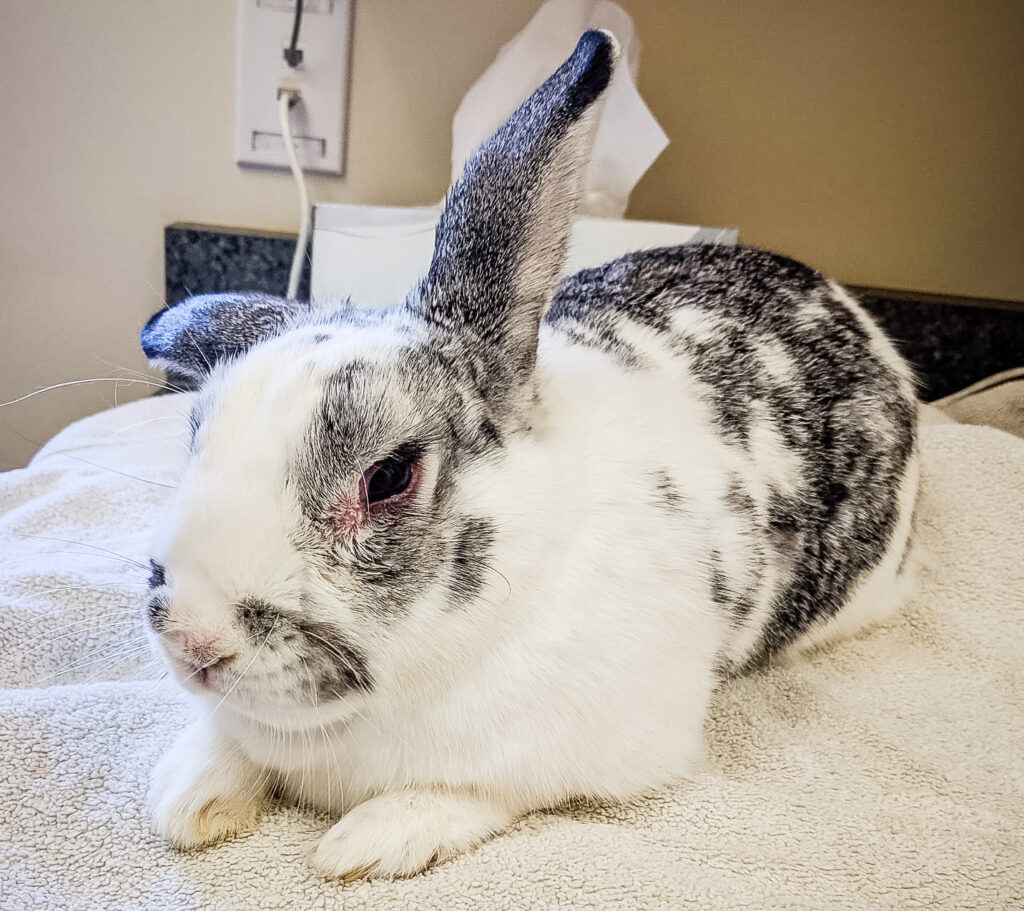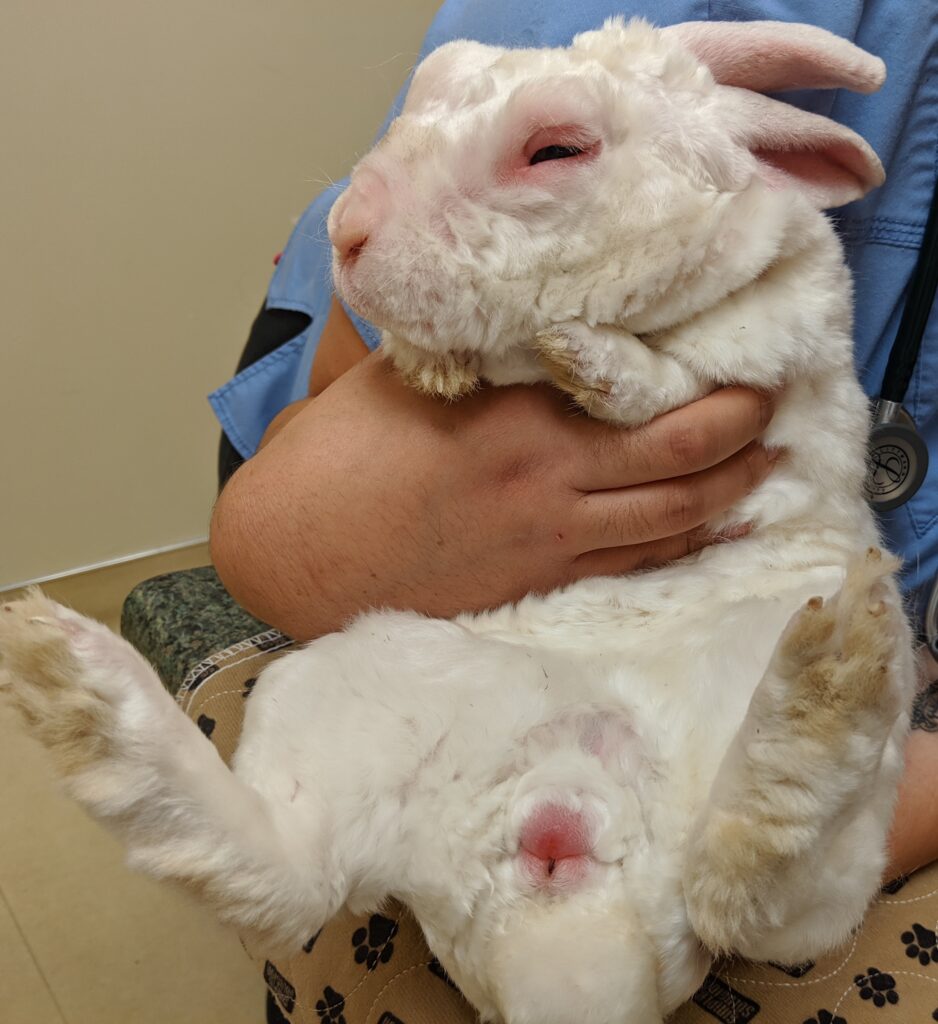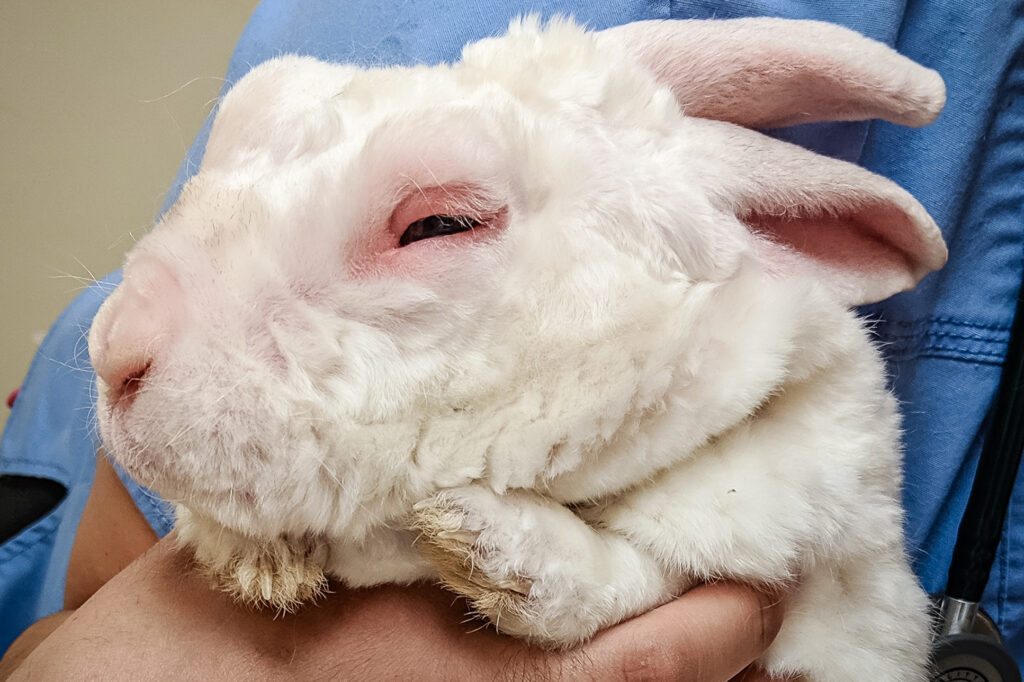Summary
- Myxomatosis is a deadly viral disease of domesticated (European) rabbits caused by the myxoma virus, a pox virus in the Leporipoxviridae genus.
- The Californian (North American) myxoma virus is naturally carried by cottontail brush rabbits. Brush rabbits live in coastal Oregon and California and on the Baja Peninsula in Mexico.
- Virulent strains of myxomatosis, such as are present in the United States, cause lethal systemic infections in pet rabbits with a reported mortality rate of 100%. There is no vaccine against myxomatosis approved in the United States.
- Symptoms of Californian myxomatosis include swollen eyelids and anogenital region, fever, and sudden death. Rabbits that survive this initial phase can develop a swollen face and difficulty breathing. Death generally occurs within 7-14 days of contracting the disease.
What is myxomatosis?
Myxomatosis is a viral infection of domesticated (European) rabbits caused by the myxoma virus, a poxvirus in the Leporipoxviridae genus. The myxoma virus is native to the Americas and is naturally carried by two cottontail rabbits in the Sylvilagus genus, the tapeti (Sylvilagus brasiliensis) in South and Central America, and the brush rabbit (Sylvilagus bachmani) in North America. The myxoma virus causes cutaneous nodules to form in these cottontail rabbits but not systemic disease. It is however highly pathogenic in European rabbits (Oryctolagus cuniculus), the species of rabbit commonly kept as pets.
Where and when does myxomatosis occur in the United States?
Outbreaks of myxomatosis caused by the Californian (North American) myxoma virus occur only in areas where wild brush rabbits live. This extends from the Columbia river in Oregon to the north, the Sierra Nevada and Cascade mountains to the east, and the tip of the Baja Peninsula in Mexico to the south. The strains of myxoma virus present in North America are highly virulent, with a mortality rate that approaches 100%. Outbreaks are more common in the late summer and fall, but can occur year-round. The number of rabbits affected and the locations of outbreaks tend to vary from year to year.
What are symptoms of Californian myxomatosis?
Early symptoms of Californian myxomatosis include swelling of the eyelids and anogenital region, fever, and sudden death. The swollen eyelids give affected rabbits a characteristic “sleepy” look. Rabbits that survive this initial phase develop a swollen face and difficulty breathing, and their body temperature will drop. Death generally occurs within 7-14 days of contracting the disease.


How is Californian myxomatosis spread?
Mosquitoes are the most common way that pet rabbits get infected with the Californian myxoma virus, but any biting insect that feeds first on a brush rabbit and then on a pet rabbit can spread the disease. Myxomatosis can also be spread by direct contact between infected rabbits, or indirect contact through contaminated fomites such as cages, food bowls, bedding, and hands.
What do I do if I suspect my rabbit has myxomatosis?
If you are concerned that your rabbit has myxomatosis, contact a rabbit veterinarian immediately. You should then move all your rabbits indoors and completely separate any ill rabbits from the other rabbits in your home.
How is myxomatosis diagnosed and treated?
The initial diagnosis of myxomatosis is often based on clinical signs, as the disease produces an unusual and unique set of symptoms. The diagnosis can be confirmed with PCR testing or skin biopsies.
There are no specific medications that combat the myxoma virus, and treatments, if attempted, consist of supportive care and antibiotics to prevent secondary infections. Most veterinarians recommend euthanizing rabbits with Californian myxomatosis because the likelihood of suffering followed by death is so high.
Does myxomatosis occur every year in California?
Outbreaks of Californian myxomatosis occur every year, although the location of cases and the number of pet rabbits affected varies. We maintain a list of recent case reports on our website to keep rabbit owner informed. If you know of recent cases, please email us at myxomatosis@rabbit.org.
Myxomatosis is a reportable disease in California. If your rabbit contracts myxomatosis, please contact the California Department of Food and Agriculture’s (CDFA) Animal Health Branch. Keeping track of when and where myxomatosis outbreaks occur helps us to learn more about this disease and how to prevent it. A list of reportable animal diseases and who to contact can be found at the CDFA’s website, https://www.cdfa.ca.gov/ . Reporting cases of myxomatosis increases the likelihood that a vaccine against this disease will be developed in the United States.
How can I protect my rabbit from myxomatosis?
The surest way of protecting your rabbit from myxomatosis is to house him or her indoors with good screens on your windows. For rabbits who must live or spend some of their time outside, keep them protected with mosquito netting. A medication that protects rabbits from fleas and ticks can be used but does not guarantee that your pet won’t become infected. Imidacloprid (AdvantageÆ II) and selamectin (RevolutionÆ) are generally safe in rabbits if dosed appropriately; consult with your veterinarian to find out what is recommended for your bunny.

